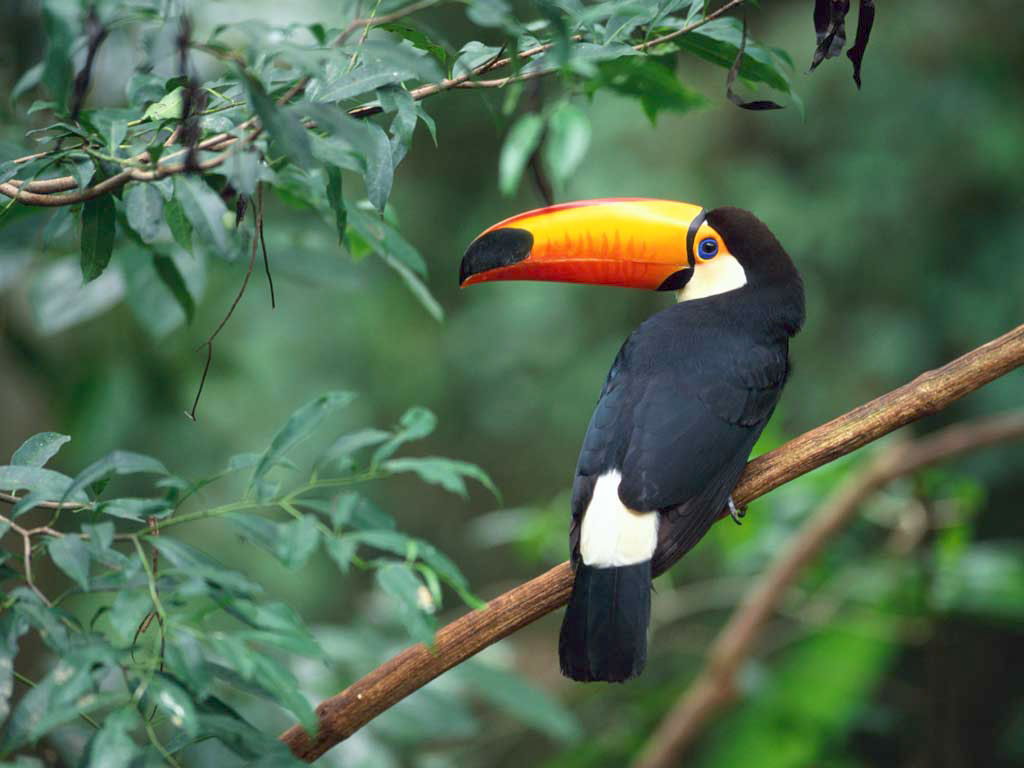The Toucan, with its vibrant plumage and large, colorful beak, is one of the most recognizable birds worldwide. This emblematic creature of the neotropical rainforests presents a captivating blend of aesthetics and adaptability. However, its natural existence is increasingly under threat due to various factors, primarily human-induced. This article delves deeper into the fascinating world of the Toucan, exploring its distinctive characteristics, breeding habits, habitat, diet, threats to its survival, and the ongoing conservation efforts to protect this iconic bird.

Distinctive Characteristics
Belonging to the Ramphastidae family, about 40 different species of Toucans adorn the tropical rainforests of Central and South America. The most distinctive feature of these birds is their large, brightly colored beak, which can grow up to 20 cm in length, nearly matching the length of their body. Despite its solid appearance, the beak is composed of keratin in a honeycomb-like structure, making it surprisingly light yet durable. This beak is multi-functional, serving for feeding, intimidation of predators, and courtship displays.
Toucans are adorned with vividly colored plumage, which typically exhibits a contrast of black with patches of bright colors on their neck and around their tail and beak. They are social creatures and are often seen in small, noisy flocks. Their vocalizations, ranging from croaking noises to high-pitched whistles, contribute to the unique auditory landscape of their habitats.
Ecology of the Toucan
Toucans are monogamous cavity nesters, often occupying spaces in tree trunks created naturally or by other animals, such as woodpeckers. The breeding season usually begins in early spring. Both male and female share the responsibility of incubating the eggs, which can range from two to four in number. The hatchlings are born without feathers and with their eyes closed, requiring diligent care from both parents.
The habitat of the Toucan spans across the lush, tropical rainforests of Central and South America. They inhabit the canopies of these forests, dependent on the tall, mature trees that provide nesting and feeding grounds. Their existence and well-being are intimately tied to the health of these rainforests.
Toucans are predominantly frugivorous, with fruits constituting the major part of their diet. Their large, curved beaks are perfectly designed to pluck, peel, and eat a variety of fruits. However, they are also opportunistic feeders. Their diet diversifies based on availability, including insects, eggs, and small lizards, which adds to their adaptability.
Threats to the Toucan
The survival of the Toucan is increasingly threatened due to several factors. The primary threat is habitat loss induced by deforestation for agriculture, logging, and urban development. The reduction of mature trees leads to a direct loss of their nesting and feeding grounds. Another significant threat is the illegal pet trade. Their vibrant appearance and unique features make them highly attractive as pets, leading to many wild Toucans being captured and sold illegally, further dwindling their population.
Conservation Efforts for the Toucan
Recognizing the threats faced by Toucans, various conservation initiatives have been implemented. One of the primary strategies involves protecting and restoring their natural habitats. Numerous regions within the Toucan’s range have been declared as protected areas, restricting destructive activities. In addition, reforestation programs are underway to replenish the lost forests.
Efforts have also been made to strengthen law enforcement to combat the illegal pet trade. These involve better patrolling, stricter regulations, and harsher penalties for illegal trafficking. However, enforcement alone is insufficient. Therefore, these efforts are often coupled with public education and awareness campaigns.
Public awareness campaigns aim to educate local communities and the broader public about the importance of Toucans to their ecosystems, the threats they face, and how they can contribute to their conservation. These campaigns often emphasize responsible tourism and discourage the purchase of wild-caught birds as pets, aiming to reduce demand within the pet trade.
Moreover, research and monitoring form a critical part of conservation efforts. Scientists are tracking populations, studying Toucan behavior, and monitoring health to gain a better understanding of the species and inform conservation strategies.
Conservation organizations are also exploring breeding programs as a potential means to increase the Toucan population. These programs, still in their nascent stages, involve breeding Toucans in controlled environments and gradually introducing them into protected natural habitats.
Conclusion
The Toucan, with its striking appearance and distinctive call, is more than just an iconic symbol of the neotropical rainforests. It is an integral part of these ecosystems, playing a crucial role in seed dispersal and aiding in the biodiversity of these habitats. However, the survival of this fascinating bird is under significant threat due to habitat loss and illegal pet trade.
Despite these challenges, the various conservation efforts underway provide a glimmer of hope. Through habitat protection, law enforcement, public education, and scientific research, we can work towards ensuring the survival of the Toucan. The journey is undoubtedly challenging, requiring concerted and sustained efforts from conservationists, local communities, governments, and the global community. However, the reward – a thriving population of Toucans in their natural habitat – is a goal worth striving for, underpinning our broader commitment to preserving the planet’s rich and diverse wildlife.
Help us Help Them! Think Wildlife Foundation is a non profit organization with various conservation initiatives. Our most prominent campaign is our Caring for Pari intiative. Pari is a rehabilitated elephant at the Wildlife SoS Hospital. 25% of the profits from our store are donated to the elephant hospital for Pari. Other than buying our wonderful merchandise, you could donate directly to our Caring For Pari fundraiser.
Written by: Sanghmitra Singh
